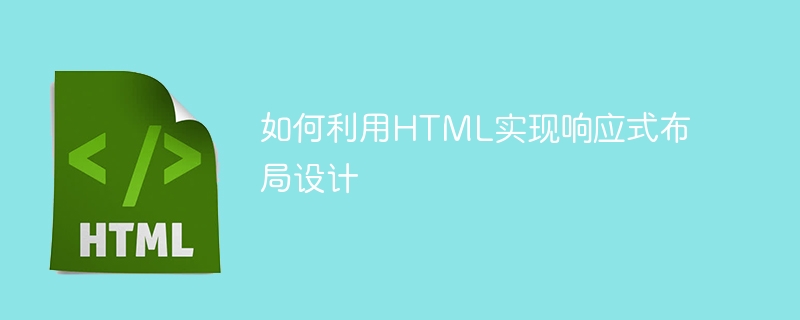

How to use HTML to implement responsive layout design
With the popularity of mobile devices and the rapid development of the Internet, responsive layout has become an essential skill for designers. Responsive layout allows the website to automatically adapt to different screen sizes and resolutions on different devices, allowing users to have a better browsing experience. This article will introduce how to use HTML to implement responsive layout design and provide specific code examples.
@media query is a feature in CSS3 that can apply different styles according to different media conditions. By using @media queries, we can adjust the layout according to the width of the screen.
For example, we can set different styles for devices with screen widths less than 600px:
@media screen and (max-width: 600px) {
/* 在这里设置你想要的样式 */
}In this style block, you can set the layout and style for a specific screen width. You can use some CSS properties, such as display, float, width, etc., to adjust the layout.
CSS grid layout is a function provided by CSS3, which can help us implement responsive layout more conveniently. Grid layout divides the page into multiple grids of different sizes and then places elements into these grids. By adjusting the size and position of the grid, we can achieve layouts for different screen sizes.
The following is an example of using CSS grid layout:
<div class="grid-container">
<div class="item">Item 1</div>
<div class="item">Item 2</div>
<div class="item">Item 3</div>
</div>
<style>
.grid-container {
display: grid;
grid-template-columns: repeat(auto-fit, minmax(200px, 1fr));
grid-gap: 10px;
}
.item {
background-color: #ccc;
padding: 10px;
}
</style>In this example, we divide a container containing three items into a grid layout and set up auto-fit columns Number of attributes grid-template-columns. Each item is styled identically.
Flexbox layout is another feature provided by CSS3, which is also very suitable for implementing responsive layout. Flexbox layout can easily adjust the size and position of elements and automatically adapt to different screen sizes.
The following is an example of using Flexbox layout:
<div class="flex-container">
<div class="item">Item 1</div>
<div class="item">Item 2</div>
<div class="item">Item 3</div>
</div>
<style>
.flex-container {
display: flex;
flex-wrap: wrap;
justify-content: space-between;
}
.item {
background-color: #ccc;
padding: 10px;
flex-basis: calc(33.33% - 20px);
}
</style>In this example, we set a container containing three items to the Flexbox layout and set equal-width styles for the items .
Summary:
By using @media query, CSS grid layout and Flexbox layout, we can achieve responsive layout design. These technologies allow us to adapt layout and styling to different screen sizes and resolutions. Hopefully the code examples provided in this article can help you better understand and apply these techniques to design better responsive websites.
The above is the detailed content of Implementation method of HTML's responsive layout design guide. For more information, please follow other related articles on the PHP Chinese website!